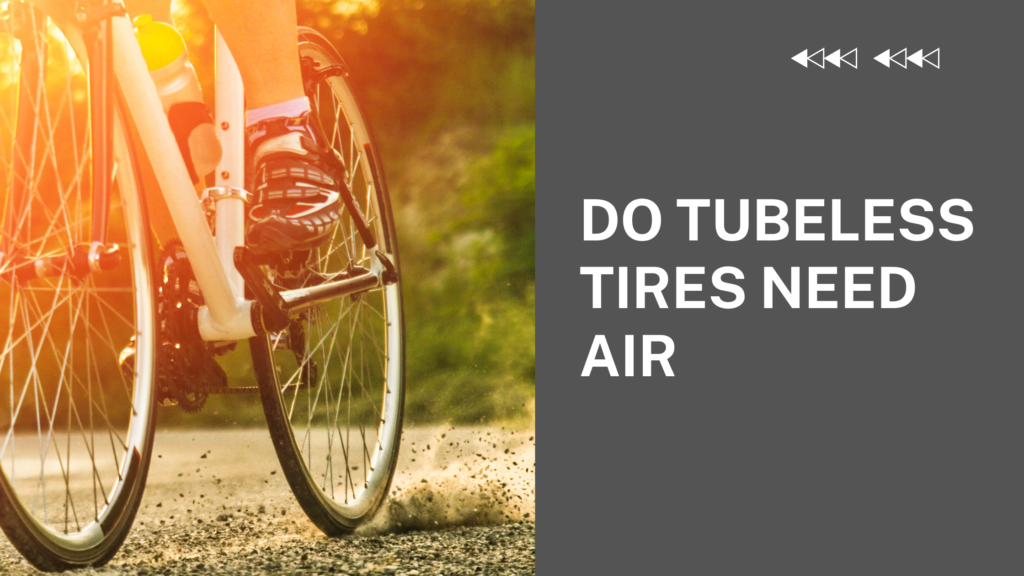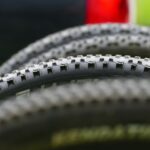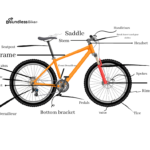Tubeless tires have become increasingly popular in recent years due to their ability to provide a smoother ride and reduce the risk of punctures. Unlike traditional tires that require an inner tube to hold air, tubeless tires rely on a sealant to keep air inside the tire. But does this mean that tubeless tires don’t need air at all? In this blog post, we’ll explore the answer to this question and provide you with everything you need to know about maintaining the air pressure in your tubeless tires.
How Tubeless Tires Work

Tubeless tires work by eliminating the inner tube found in traditional tires. Instead of an inner tube, tubeless tires rely on airtight rims and a special sealant to keep the air inside the tire.
The tire’s bead is designed to fit tightly against the rim, creating an airtight seal. The tire is then filled with sealant, which is a liquid that is designed to flow around the inside of the tire and cover any small punctures or leaks.
When a tubeless tire is punctured, the sealant is forced into the hole and seals the puncture, preventing air from escaping. This can help prevent flats and allows the rider to continue riding without interruption.
Tubeless tires can also be run at lower air pressures than traditional tires, which can provide a smoother ride and better traction on rough or uneven terrain. Lower air pressure also reduces the risk of pinch flats, which occur when the tire is pinched between the rim and a hard object.
Do tubeless tires need air?
Yes, tubeless tires do need air. While traditional tires require an inner tube to hold air, tubeless tires rely on the sealant to create an airtight seal between the tire and the rim. However, the sealant alone is not enough to maintain the tire’s air pressure. Tubeless tires still require regular checking and inflation to ensure they are properly inflated.
The recommended air pressure for tubeless tires can vary depending on the manufacturer and the specific tire model. It’s important to check the recommended pressure in the tire’s user manual or on the sidewall of the tire itself. Overinflating or underinflating tubeless tires can affect their performance, durability, and safety.
Tubeless tires also require regular inspection for damage or wear. The sealant can seal small punctures, but larger punctures or cuts may require a patch or replacement. If the air pressure in a tubeless tire drops suddenly or unexpectedly, it’s important to inspect the tire for damage and make any necessary repairs.
Benefits of Proper Air Pressure
- Better performance: When a bicycle tire is properly inflated, it provides better performance and efficiency. The tire can roll more easily, allowing for faster speeds and less effort required to pedal.
- Increased durability: Properly inflated tires are less likely to suffer from punctures or damage from hitting potholes or other road hazards.
- Improved handling: With the correct air pressure, a bicycle tire has better grip and can corner more safely and efficiently.
- Smoother ride: Properly inflated tires absorb shocks better, providing a smoother and more comfortable ride.
- Enhanced safety: Underinflated bicycle tires are more prone to flats, and can also make the bicycle harder to control, especially on wet or slippery surfaces.
- Longer lifespan: Over time, underinflated tires can cause damage to the tire’s sidewall, leading to premature failure. Proper air pressure can extend the lifespan of the tire.
How to Check and Adjust Air Pressure
- Check the recommended air pressure: The recommended air pressure for your vehicle or bicycle can be found in the owner’s manual or on a placard located on the vehicle or bicycle itself. The recommended pressure is usually given in PSI (pounds per square inch) or bar.
- Check the current air pressure: Use a tire pressure gauge to check the current air pressure in each tire. Remove the valve cap and press the gauge onto the valve stem until the gauge shows the current pressure.
- Compare the current pressure to the recommended pressure: If the current pressure is too low, add air until it matches the recommended pressure. If the current pressure is too high, release air until it matches the recommended pressure.
- Adjust the pressure: To add air, use an air compressor or go to a gas station that has an air pump. To release air, press the pin in the center of the valve stem with a fingernail or the tip of a pen.
- Recheck the pressure: Once you’ve adjusted the pressure, recheck the pressure with the gauge to make sure it matches the recommended pressure.
- Repeat for all tires: Check and adjust the pressure for all the tires, including the spare tire if you have one.
FAQ
Yes, sealant is a key component of tubeless tire systems. It helps to seal punctures and leaks, and can also help to prevent them from occurring in the first place. Most tubeless tires come with sealant pre-installed, but it may need to be topped up periodically.
No, tubeless tires require specific rims that have an airtight seal. Attempting to use tubeless tires on a traditional rim can result in air leaks and poor performance.
Yes, in an emergency, you can use a tube in a tubeless tire. However, this will negate many of the benefits of tubeless tires, and it’s important to have the tubeless system properly repaired as soon as possible.
Tips
- Check your tire pressure regularly, especially before long rides or races, to ensure optimal performance and safety.
- Top up your sealant periodically to maintain its effectiveness.
- If you do get a puncture, don’t panic. Often, the sealant will seal the puncture automatically, or you can add more sealant to seal it manually.
- To make seating the tire bead easier, use an air compressor or a high-volume pump.
- When installing a new tubeless tire, be sure to clean the rim thoroughly to ensure a proper seal.
- If you’re having trouble with air leaks, check for any damage to the tire or rim, and make sure the valve stem is properly seated.
- When removing a tubeless tire, be careful not to damage the bead or the sealant.
- If you’re new to tubeless tires, consider having a professional mechanic install them for you to ensure proper installation and safety.
Conclusion
In conclusion, tubeless tires still require air to function properly. The airtight seal between the tire and the rim creates an air chamber that needs to be pressurized to maintain the proper shape and support. Proper air pressure is essential for optimal performance, safety, and tire longevity. By checking and adjusting your tire pressure regularly, you can enjoy all the benefits of tubeless tires without worrying about air pressure issues. So go ahead and enjoy the ride with your tubeless tires!






